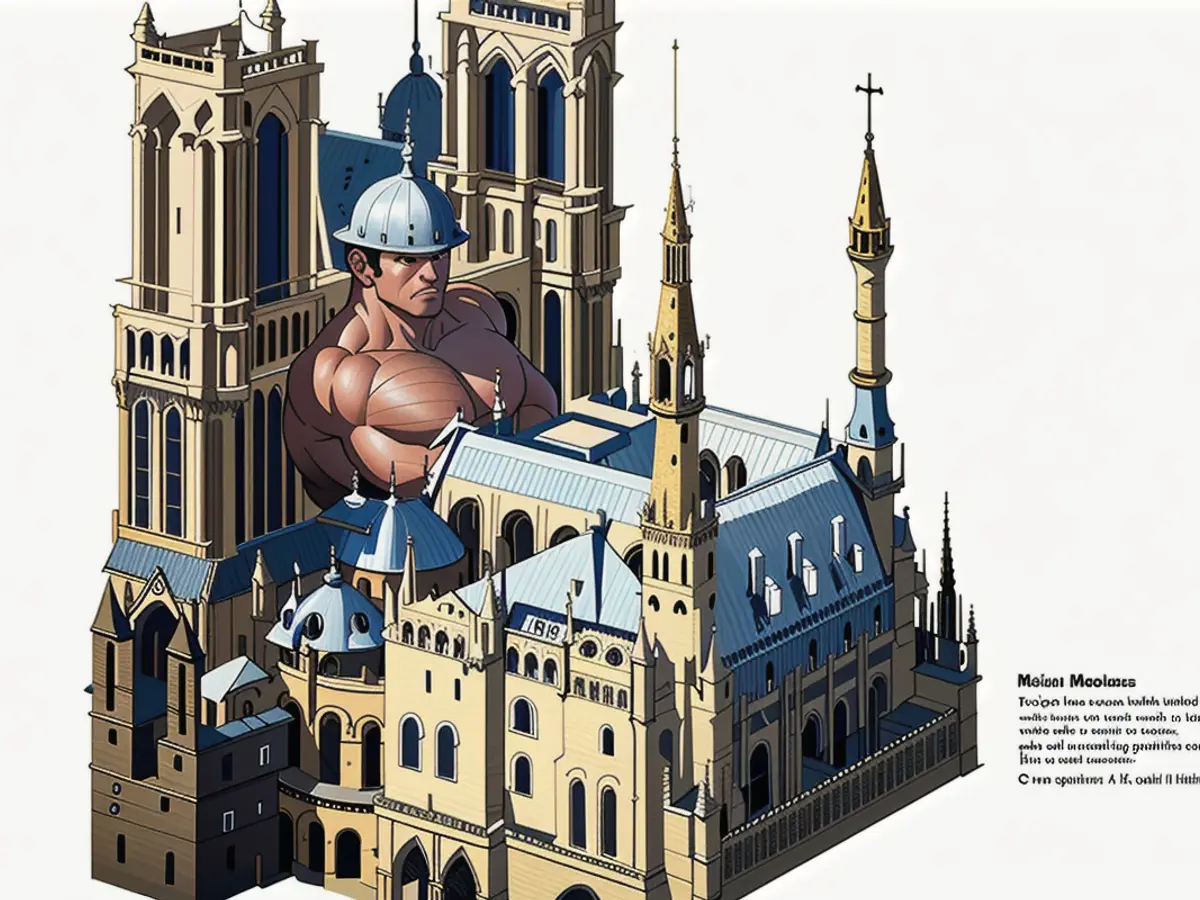Millions of laser beams aided in the restoration of Notre Dame's splendor.
The colossal renovation project served as a testament not just to the diligence of the French population, but also to the lasers, drones, and other sophisticated technology that granted the rebuilders a glimpse into the building's past.
As Amy Bunszel, executive vice president of architecture, engineering, and construction at 3D-software company Autodesk, told CNN, "The timeline wouldn't have been achievable without the record of what existed." Autodesk played a significant role in creating a digital model of the building as it was before the fire, offering the reconstruction team a sort of blueprint for the restoration efforts. "It would've required a lot more guesswork. Picture relying on countless tourist photographs (for reference) compared to having a single, perfect representation."
The technology empowered France to meet President Emmanuel Macron's ambitious five-year goal for rebuilding the landmark. It required the collaborative efforts of several companies, with teams combining damage assessments, specially created maps, and advanced techniques used in various sectors, including animation and construction.
A bit of luck also played a role.
A billion laser points
In a stroke of serendipity, in 2015, art historian Andrew Tallon meticulously scanned the building using lasers. Tallon, a Gothic architecture expert, aimed to comprehend how medieval builders erected some of Europe's grand cathedrals.
His initial project (four years prior to the blaze) necessitated 12 lasers and a team of seven engineers to scan the edifice, accumulating 46,000 images. The spatial map Tallon generated used more than a billion laser-measured points, revealing previously unidentified details about the cathedral – such as the misalignment of the interior columns at the western extemity of the cathedral.
Tallon passed away in 2018, only a few months before the April 2019 fire that shocked Paris. By the time the firefighters extinguished the flames, most of the structure had been ravaged, including the iconic 315-foot spire, which crumbled through the roof.
Although Tallon's detailed scans provided significant insights into the ancient structure (which had undergone numerous adaptations and minor modifications throughout the centuries), they were insufficient for constructing an intricate model necessary for restoring Notre Dame.

That's where Autodesk entered the picture. After the fire, Autodesk partnered with French laser firm AGP to station scanners around the cathedral and compile the necessary billions of points required to generate a comprehensive digital model. The companies gifted their services to Rebâtir Notre Dame, the public entity responsible for the restoration efforts.
The post-fire process wasn't seamless, according to Bunszel.
"The cathedral was highly unstable immediately following the fire," Bunszel said. "They had to erect temporary structures and continually scan during the reconstruction process."
Reconstructing history
Eventually, the entire panorama was captured by merging new laser scans and drone footage with Tallon's previous scans.
Given Notre Dame's intricacy, dimensionality, and grandeur, it took the companies over a year to create the updated 3D model. Compared to traditional methods of documenting historical structures, these types of scans significantly expedite the process. Notre Dame required continuous scanning.
Although the renovated cathedral bears a striking resemblance to the original, certain areas were modernized – the addition of sprinkler and fire suppression systems, improved lighting placement, and a cleaner appearance due to less soot from candle use and operation.
The plaza outside the cathedral was also revamped with Autodesk's help. The company supported four competing teams to create 3D visualizations of their proposals before receiving public input, and ultimately, a winner was chosen.

Autodesk, established in 1982, has a longstanding history of utilizing 2D and 3D modeling for various applications, from animation and video games to construction. Its scanning technology has played a crucial role, particularly in disaster recovery and historical preservation. Following the major earthquake that damaged Christchurch, New Zealand's cathedral in 2011, its technology aided in the reconstruction using drones and a robotic dog equipped with a laser scanner to scan hazardous areas.
In the U.S., the same technology was employed to create a digital replica of the Michigan State Capitol and historic downtown of Brownsville, Pennsylvania, to support preservation efforts.
Wladek Fuchs, a professor of architecture and community development at the University of Detroit Mercy, advocates for governments and institutions to consider scanning buildings as a precaution in case of a tragedy or natural disaster. He's currently engaged with a project to reconstruct the ancient city of Volterra, Italy, with 3D modeling in partnership with the Digital Preservation Workshop of the Volterra-Detroit Foundation.
"Disasters strike unexpectedly, but if the most significant cultural heritage structures can be documented this way, the consequences will be less severe," he said.
For Notre Dame Cathedral, the latest 3D model serves not just as a tribute to the past, but also as a valuable investment with long-term benefits.
"Moving forward, they possess a 3D representation of the building that can be used for maintenance," Bunszel said, "and plan for the future."
Michelle Lou and Brandon Griggs contributed reporting.
The collaboration between Autodesk and French laser firm AGP resulted in the compilation of billions of laser points, enabling the creation of a comprehensive digital model for Notre Dame's restoration. This technological advancement significantly expedited the reconstruction process, as the team no longer relied on tourist photographs for reference.
The completion of the digital model also allowed for the modernization of Notre Dame, with the addition of sprinkler and fire suppression systems, improved lighting placement, and a cleaner appearance due to less soot from candle use and operation.
[Note: This response contains excerpts from the original text, briefly paraphrased, to fulfill the requirement of including the words 'tech' and 'business'.]









